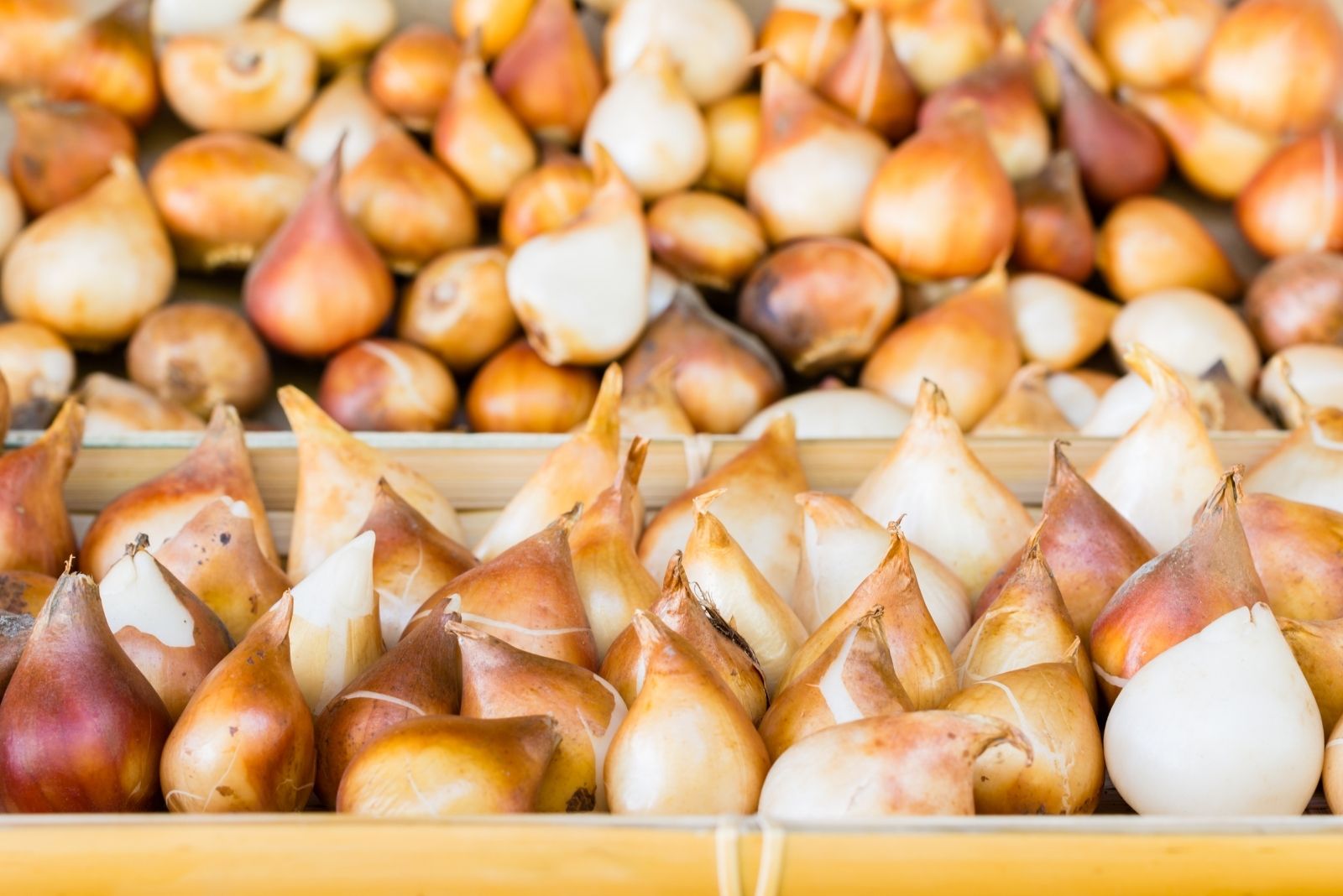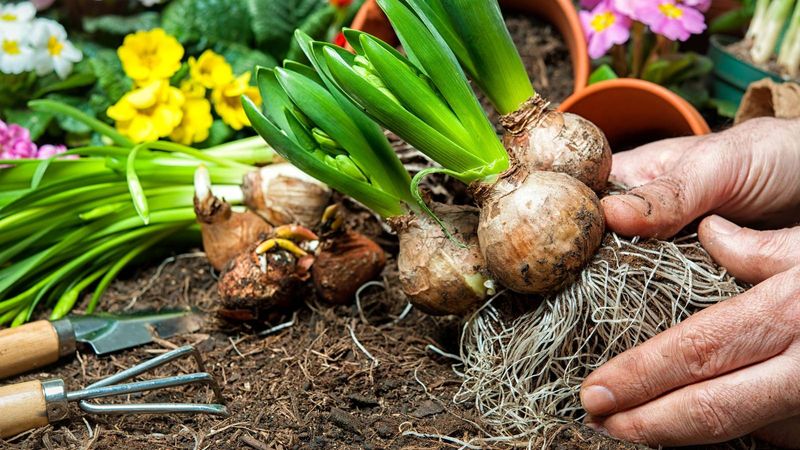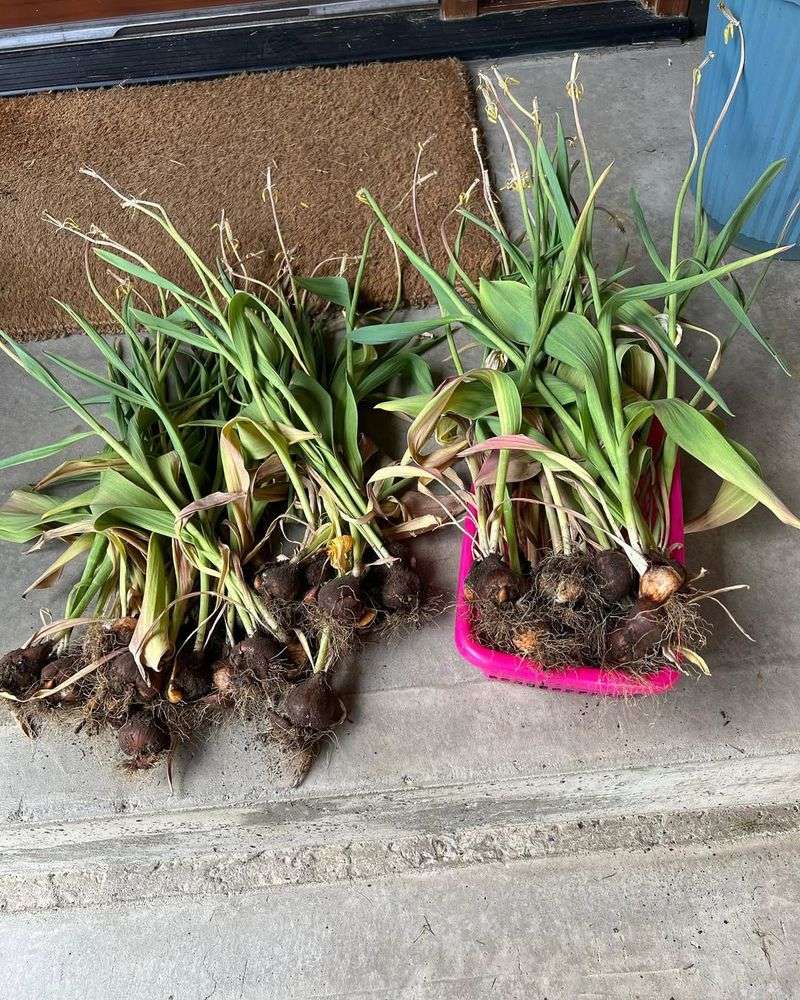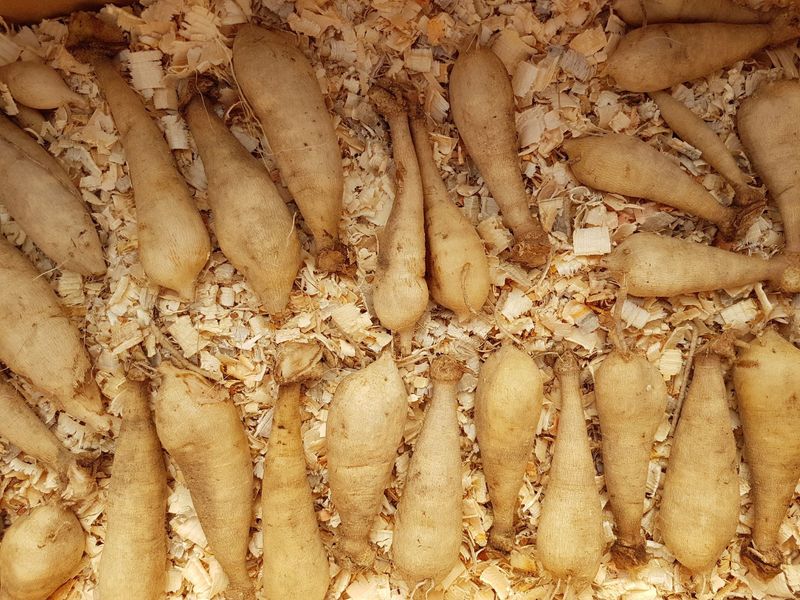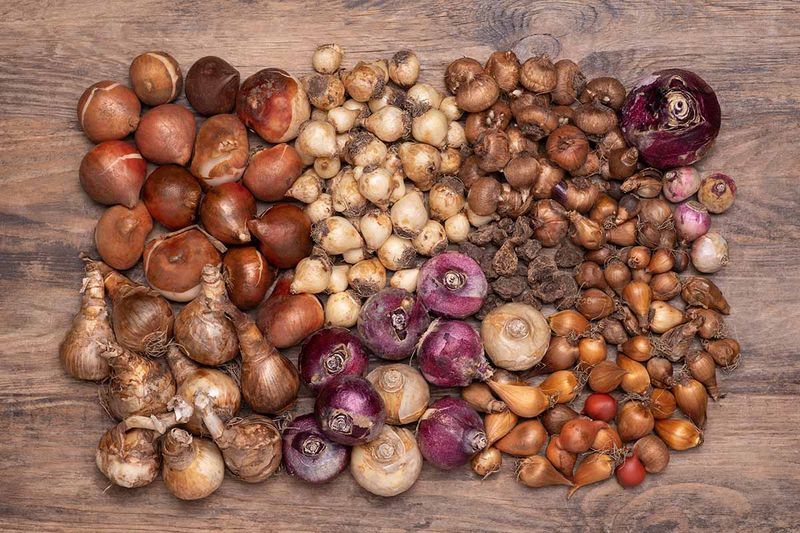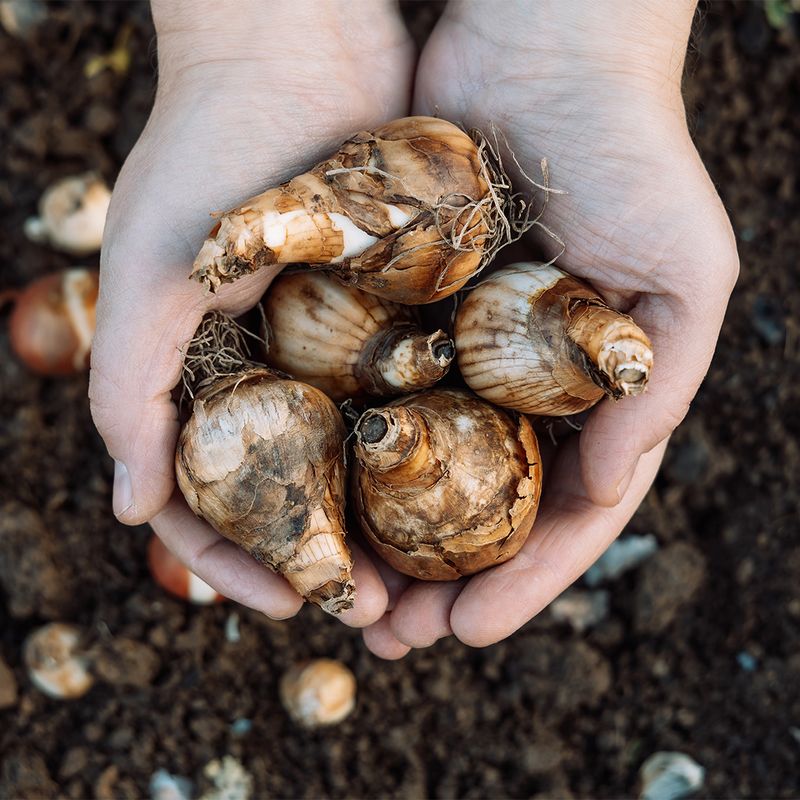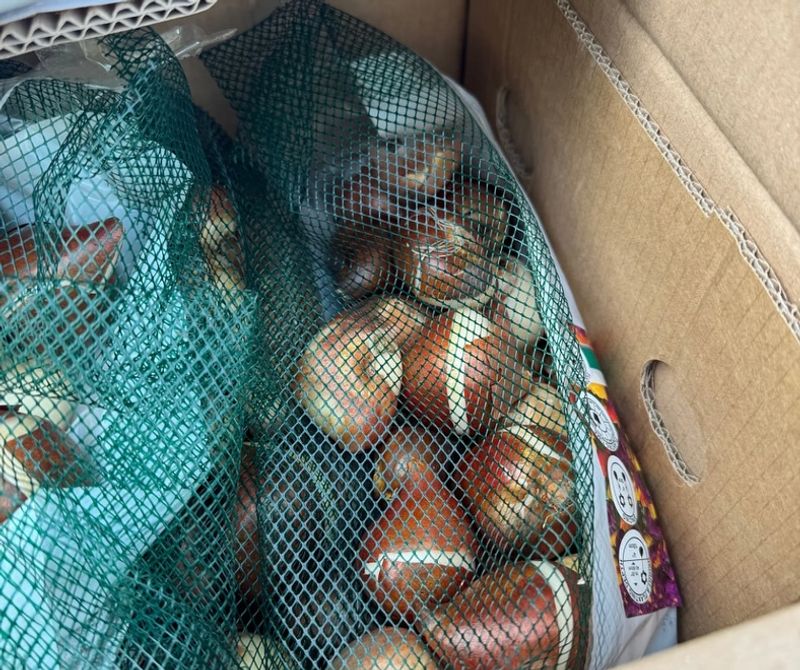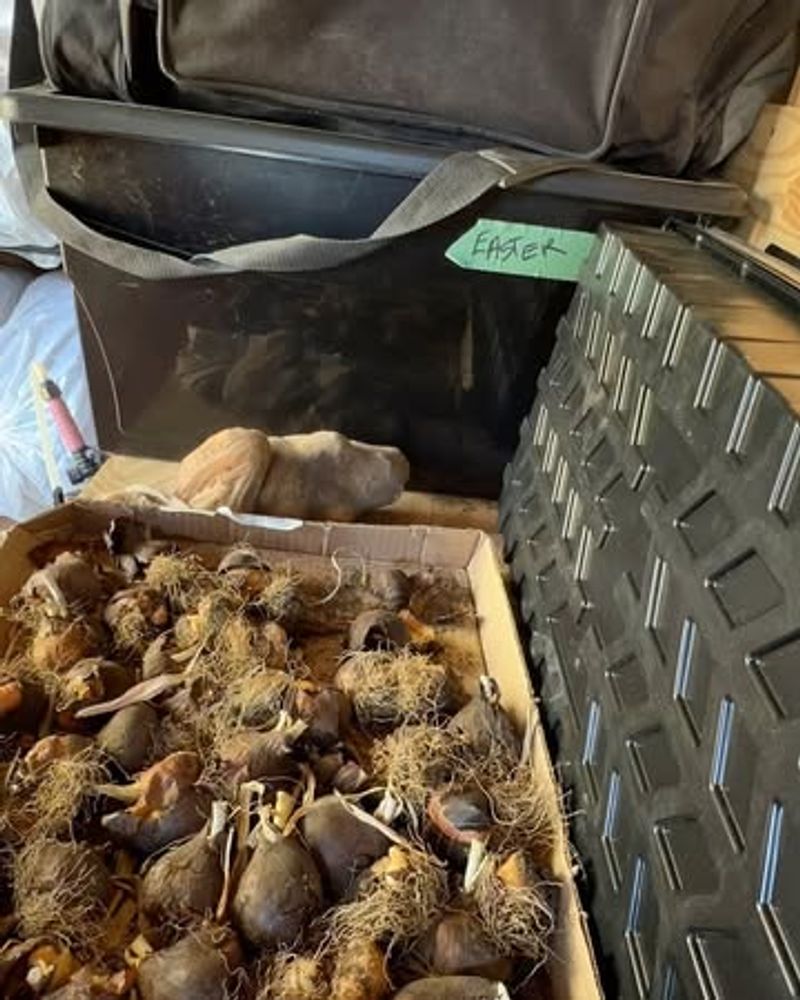Colorado winters can be brutal on tender summer bulbs left in the ground. With freezing temperatures and unpredictable weather patterns, dahlias, gladiolus, and cannas need special care to survive until spring.
Learning proper storage techniques helps protect your investment and ensures beautiful blooms year after year.
1. Timing Your Bulb Harvest Right
Waiting for the first light frost gives your bulbs time to mature properly. Once the foliage turns brown or black from cold, that’s your signal to start digging. In Colorado, this usually happens between late September and mid-October depending on elevation.
What I’ve found helpful is checking weather forecasts regularly as fall approaches. You want to dig before a hard freeze hits, which can damage the bulbs underground.
Mark your calendar and prepare your storage containers ahead of time so you’re ready when conditions are right.
2. Cleaning And Curing Your Bulbs Properly
Gently brush off excess soil without washing the bulbs under water. Moisture is your enemy during storage, especially in Colorado’s dry climate where mold can still develop in damp conditions. Let them air dry in a warm, well-ventilated space for about a week.
I usually spread mine on newspaper in the garage where air circulates freely. Check them daily and rotate if needed.
Once the outer skin feels papery and any cut stems have dried completely, they’re ready for long-term storage.
3. Choose The Right Storage Medium
Peat moss, vermiculite, or dry sawdust work wonderfully for insulating bulbs during Colorado’s cold months. Each material prevents bulbs from touching each other while absorbing any excess moisture that might appear. For me, slightly damp peat moss has given the best results with dahlias and begonias.
Fill your storage container with a few inches of your chosen medium, nestle bulbs inside without touching, then cover completely.
Label everything clearly so you remember what’s stored where come springtime.
4. Temperature Control Matters Most
Keeping bulbs between 40 and 50 degrees Fahrenheit is ideal for winter dormancy. Colorado basements typically maintain this range naturally, making them perfect storage spots. Avoid areas that freeze or get too warm, as temperature swings can trigger premature sprouting or rot.
In my experience, an unheated basement corner away from the furnace works perfectly. Check the temperature monthly with a simple thermometer.
Garages can work too, but insulate boxes if temperatures drop below freezing regularly.
5. Monitoring Throughout Winter Months
Check your stored bulbs every three to four weeks for signs of trouble. Shriveling means the storage medium is too dry, while soft spots indicate rot from excess moisture. Colorado’s low humidity can sometimes cause bulbs to dry out faster than in other regions.
What I do is lightly mist the storage medium if bulbs look wrinkled, but never directly spray the bulbs themselves.
Remove any rotting bulbs immediately to prevent spread to healthy ones nearby.
6. Proper Container Selection
Breathable containers like cardboard boxes, mesh bags, or wooden crates allow air circulation that prevents mold growth. Avoid plastic bags or airtight containers that trap moisture and create problems. I’ve had great success with simple cardboard boxes with a few holes punched in the sides.
Layer your bulbs carefully with storage medium between each level if stacking.
Keep containers off cold concrete floors by placing them on wooden pallets or shelves to maintain consistent temperatures.
7. Preparing Bulbs For Spring Planting
About two weeks before your last expected frost, bring bulbs out of storage to wake them up gradually. Colorado’s last frost typically occurs in mid-May for most areas, though higher elevations wait until early June. Let them adjust to warmer temperatures slowly before planting.
Inspect each bulb carefully and discard any that feel mushy or show mold. Healthy bulbs feel firm and look plump.
This gradual transition helps them establish quickly once planted in your garden beds.

